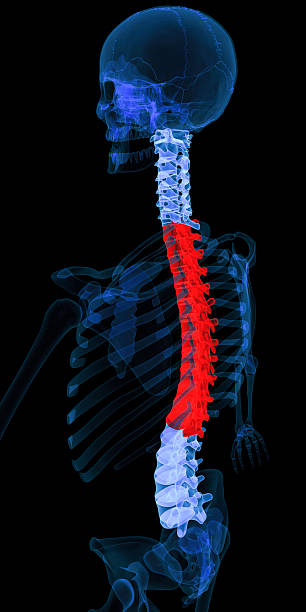Cauda Equina Syndrome - All You Need Understand

Lower back pain could have any number of causes, and many forms can be
treated with natural methods. This is not true for all back pain. Cauda Equina
syndrome is one of the most severe causes for lumbar pain. This article can help
you determine the cause of your symptoms.
What exactly is Cauda Equina Syndrome and How can it be treated?
The cauda-equina, a bundle or nerves that are located at the terminus the
spinal cord, is also referred to as the cauda equina. The nerves in this
collection are responsible for the innervation of the legs, bladder, and the
pelvic region. Cauda Equina syndrome is the condition where nerves become too
stretched to provide the sensory and motor function to the mentioned areas. In
the majority of patients, the compression causes lower back pain.
Most often, this compression is brought upon the patient immediately, since
it usually occurs due to unexpected trauma to the region. The most commonly
cited cause is a herniated disc. But, other causes may be:
Impact injuries
Dissections can cause complications.
The spinal cord can be affected by the growth of a tumor.
Lumbar trauma can happen to any person, regardless of birth defects. Cauda
Equina syndrome can affect anyone.
Signs
The signs and symptoms associated with this syndrome are similar to the
symptoms of other conditions, particularly those with an injured disc. While no
singular symptom is a guarantee of the existence of cauda equina
solicitors, there are a variety of signs that indicate the possibility that
CES is the cause of the symptoms you are experiencing.
CES is characterized by extreme back pain, sensory and motor loss in the
lower extremities, problems with sexual dysfunction and new-onset bladder,
bowel, or bladder problems. The pain can radiate from the lower back to the leg
or hip area.
Diagnosis
You should seek a formal diagnosis if you think your symptoms could be caused
by CES. It can be done using magnetic resonance imaging (MRI) or with myelogram.
The imaging techniques can help us to identify if the cauda-equina has been
compressed. If not treated, CES can cause permanent paralysis and even
dysfunction of the bowels and bladder.
Treatment
Because of its traumatic origin, cauda equina syndrome should be treated as
quickly as possible. Studies have shown that patients who undergo surgery done
within the shortest time possible following the onset of symptoms experience
more favorable outcomes. Surgery must be completed within 48 hours after the
first onset of symptoms.
The only way to relieve symptoms is by surgically dissolving nerve bundles.
The improvement is noticeable observed in patients who underwent the procedure
after 24 hours.
Prescription medication may be required to ease nerve pain caused by cauda
equina solicitors.
Results
Because the extent of compression and the efficiency of surgery are crucial
in the treatment of CES results, they can be wildly different. Many patients
experience significant improvement in motor function and sensation after
treatment, however some symptoms can persist for an indefinite period of
time.
Next steps
Our clinic can help you determine if you or someone you care about suffers from the cauda Equina syndrome. The speed of treatment is critical and the more proactive the treatment is, the greater the likelihood the patient can complete a full recovery. No matter what's causing the symptoms, we'll assist you in ensuring that you receive expert treatment and is on the path towards recovery.
Коментарі
Дописати коментар